
How to Use LM393: Examples, Pinouts, and Specs
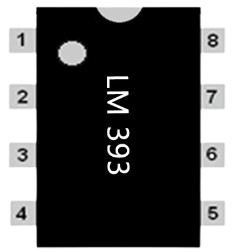
 Design with LM393 in Cirkit Designer
Design with LM393 in Cirkit DesignerIntroduction
The LM393 is a dual comparator integrated circuit (IC) designed to compare two input voltages and output a digital signal based on the comparison. It features two independent voltage comparators in a single package, making it versatile and efficient for a wide range of applications. The LM393 operates with a wide supply voltage range and is known for its low power consumption.
Explore Projects Built with LM393
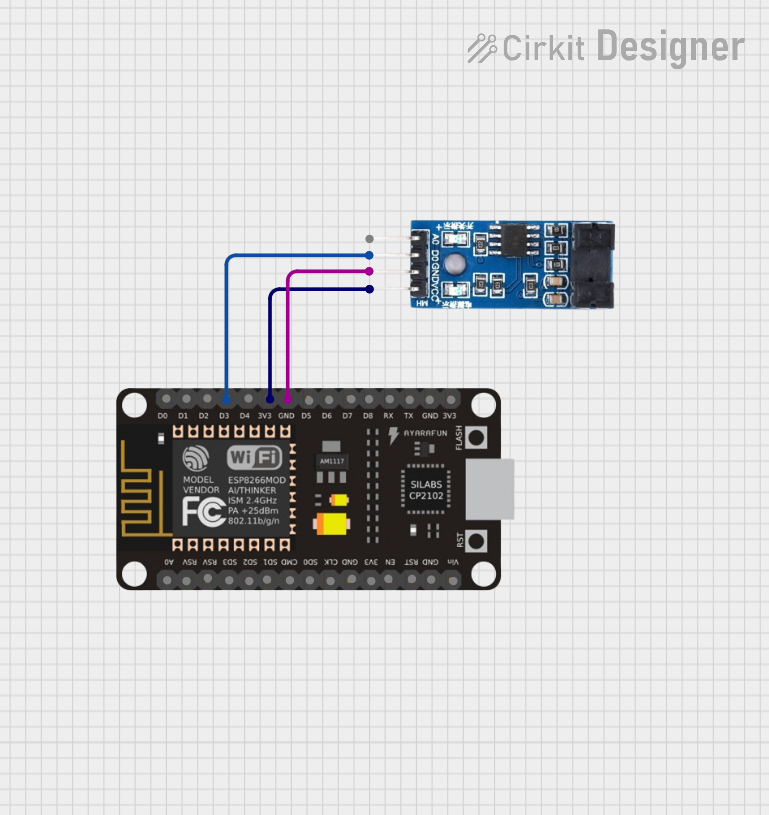
 Open Project in Cirkit Designer
Open Project in Cirkit Designer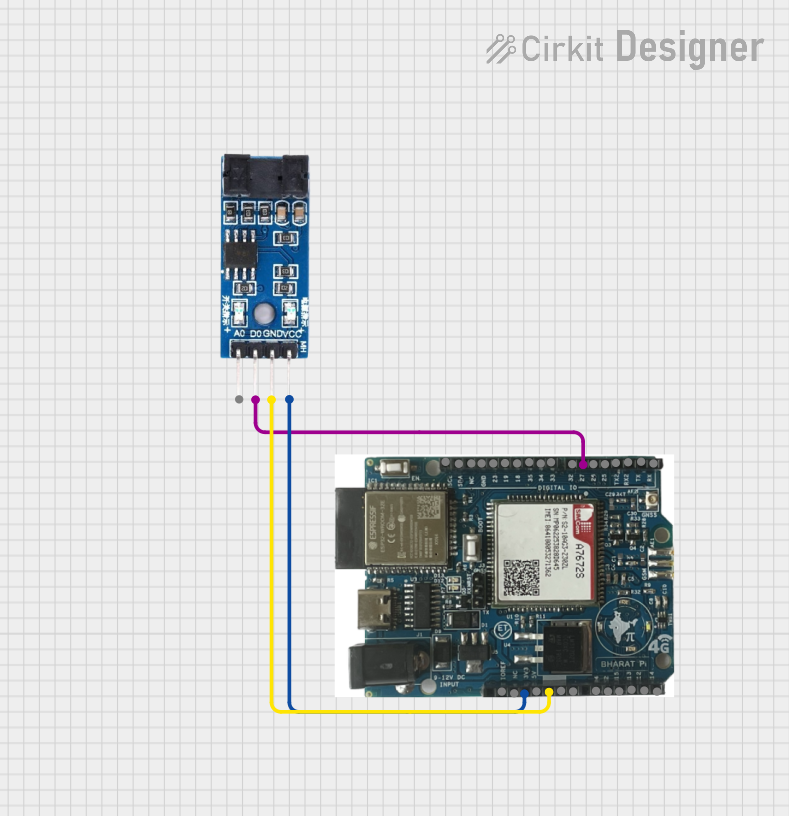
 Open Project in Cirkit Designer
Open Project in Cirkit Designer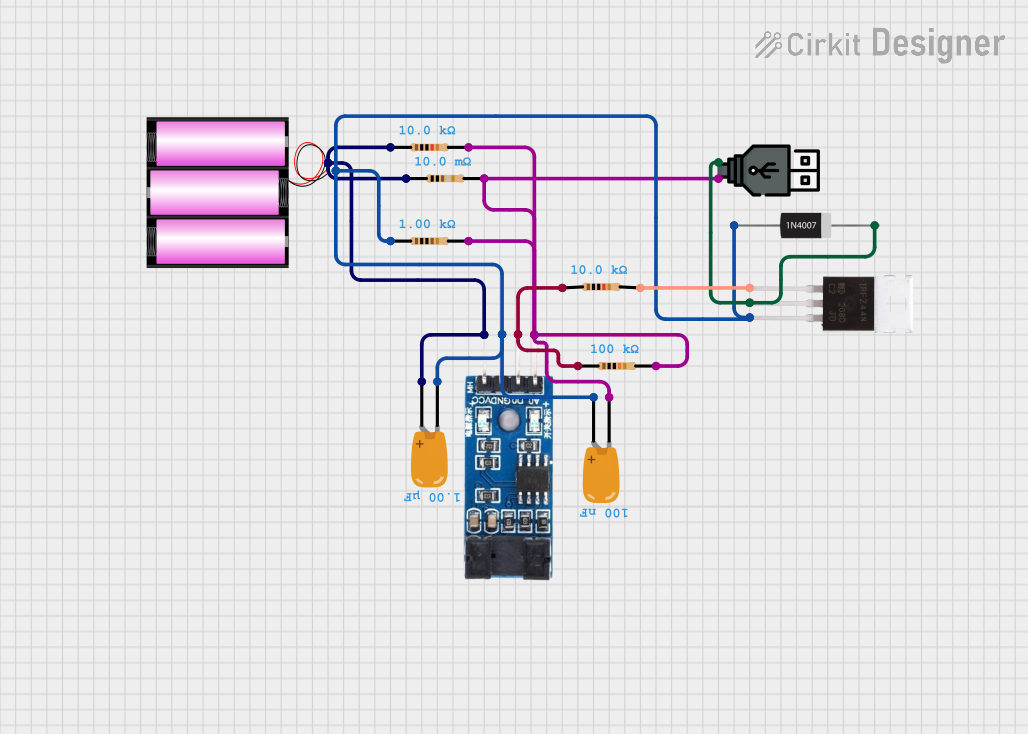
 Open Project in Cirkit Designer
Open Project in Cirkit Designer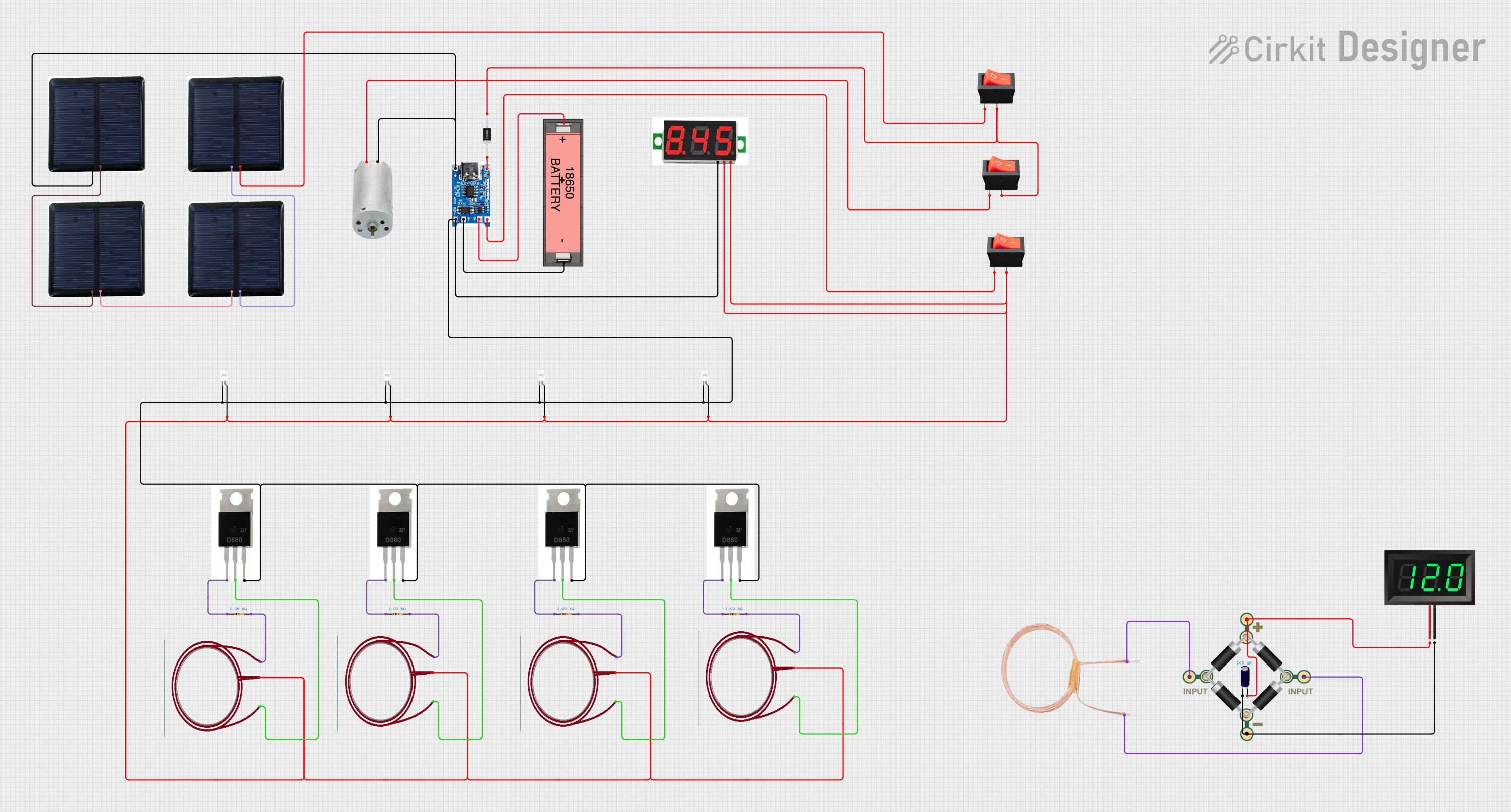
 Open Project in Cirkit Designer
Open Project in Cirkit DesignerExplore Projects Built with LM393

 Open Project in Cirkit Designer
Open Project in Cirkit Designer
 Open Project in Cirkit Designer
Open Project in Cirkit Designer
 Open Project in Cirkit Designer
Open Project in Cirkit Designer
 Open Project in Cirkit Designer
Open Project in Cirkit DesignerCommon Applications
- Voltage level detection
- Signal conditioning
- Zero-crossing detectors
- Pulse-width modulation (PWM) circuits
- Analog-to-digital signal conversion
- Control systems and automation
Technical Specifications
The LM393 is a robust and reliable IC with the following key technical specifications:
| Parameter | Value |
|---|---|
| Supply Voltage (Vcc) | 2V to 36V |
| Input Offset Voltage | ±5mV (typical) |
| Input Common-Mode Voltage | 0V to Vcc - 1.5V |
| Output Voltage (Low State) | 0.2V (typical) at 4mA |
| Output Sink Current | 16mA (maximum) |
| Response Time | 1.3µs (typical) |
| Operating Temperature | -40°C to +85°C |
| Package Types | DIP-8, SOIC-8, TSSOP-8 |
Pin Configuration and Descriptions
The LM393 is typically available in an 8-pin package. Below is the pinout and description:
| Pin Number | Pin Name | Description |
|---|---|---|
| 1 | Output 1 | Output of comparator 1 |
| 2 | Inverting Input 1 | Inverting input of comparator 1 |
| 3 | Non-Inverting Input 1 | Non-inverting input of comparator 1 |
| 4 | GND | Ground (0V reference) |
| 5 | Non-Inverting Input 2 | Non-inverting input of comparator 2 |
| 6 | Inverting Input 2 | Inverting input of comparator 2 |
| 7 | Output 2 | Output of comparator 2 |
| 8 | Vcc | Positive power supply |
Usage Instructions
The LM393 is straightforward to use in a circuit. Below are the steps and considerations for its proper usage:
How to Use the LM393 in a Circuit
- Power Supply: Connect the Vcc pin (Pin 8) to a positive voltage source (2V to 36V) and the GND pin (Pin 4) to ground.
- Input Connections:
- Connect the voltage to be compared to the non-inverting (Pin 3 or Pin 5) and inverting (Pin 2 or Pin 6) inputs.
- Ensure the input voltage levels are within the common-mode voltage range (0V to Vcc - 1.5V).
- Output: The output (Pin 1 or Pin 7) will be in a low state (close to 0V) if the inverting input voltage is higher than the non-inverting input voltage. Otherwise, the output will be in a high-impedance state (requires a pull-up resistor to Vcc).
- Pull-Up Resistor: Use a pull-up resistor (e.g., 10kΩ) on the output pin to ensure proper logic levels.
Example: Connecting LM393 to an Arduino UNO
The LM393 can be used with an Arduino UNO for voltage level detection. Below is an example circuit and code:
Circuit Description
- Connect the LM393's Vcc to the Arduino's 5V pin and GND to the Arduino's GND.
- Connect the non-inverting input (Pin 3) to the voltage to be monitored.
- Connect the inverting input (Pin 2) to a reference voltage (e.g., from a voltage divider).
- Connect the output (Pin 1) to a digital input pin on the Arduino (e.g., Pin 2).
Arduino Code
// LM393 Comparator Example with Arduino UNO
// This code reads the output of the LM393 and turns on an LED if the monitored
// voltage exceeds the reference voltage.
const int lm393OutputPin = 2; // LM393 output connected to digital pin 2
const int ledPin = 13; // Onboard LED pin
void setup() {
pinMode(lm393OutputPin, INPUT); // Set LM393 output pin as input
pinMode(ledPin, OUTPUT); // Set LED pin as output
Serial.begin(9600); // Initialize serial communication
}
void loop() {
int comparatorState = digitalRead(lm393OutputPin); // Read LM393 output
if (comparatorState == HIGH) {
digitalWrite(ledPin, HIGH); // Turn on LED if voltage exceeds reference
Serial.println("Voltage is above reference level.");
} else {
digitalWrite(ledPin, LOW); // Turn off LED otherwise
Serial.println("Voltage is below reference level.");
}
delay(500); // Wait for 500ms before next reading
}
Important Considerations and Best Practices
- Input Voltage Range: Ensure the input voltages are within the specified common-mode range to avoid incorrect operation.
- Pull-Up Resistor: Always use a pull-up resistor on the output pin to achieve proper logic levels.
- Decoupling Capacitor: Place a decoupling capacitor (e.g., 0.1µF) near the Vcc pin to reduce noise and improve stability.
- Output Current: Do not exceed the maximum output sink current (16mA) to prevent damage to the IC.
Troubleshooting and FAQs
Common Issues and Solutions
No Output Signal:
- Check the power supply connections (Vcc and GND).
- Verify that the input voltages are within the common-mode range.
- Ensure a pull-up resistor is connected to the output pin.
Incorrect Output Behavior:
- Confirm that the inverting and non-inverting inputs are connected correctly.
- Check for noise or instability in the input signals and add filtering if necessary.
Overheating:
- Ensure the output current does not exceed the maximum rating (16mA).
- Verify that the supply voltage is within the specified range.
FAQs
Q: Can the LM393 be used for high-speed applications?
A: The LM393 has a typical response time of 1.3µs, making it suitable for moderate-speed applications but not ideal for high-speed requirements.
Q: What happens if the input voltage exceeds the common-mode range?
A: The comparator may not function correctly, and the output could become unpredictable. Always ensure the input voltages are within the specified range.
Q: Can the LM393 output directly drive an LED?
A: Yes, but ensure the current through the LED does not exceed the maximum output sink current (16mA). Use a current-limiting resistor in series with the LED.
By following this documentation, users can effectively integrate the LM393 into their projects and troubleshoot common issues with ease.